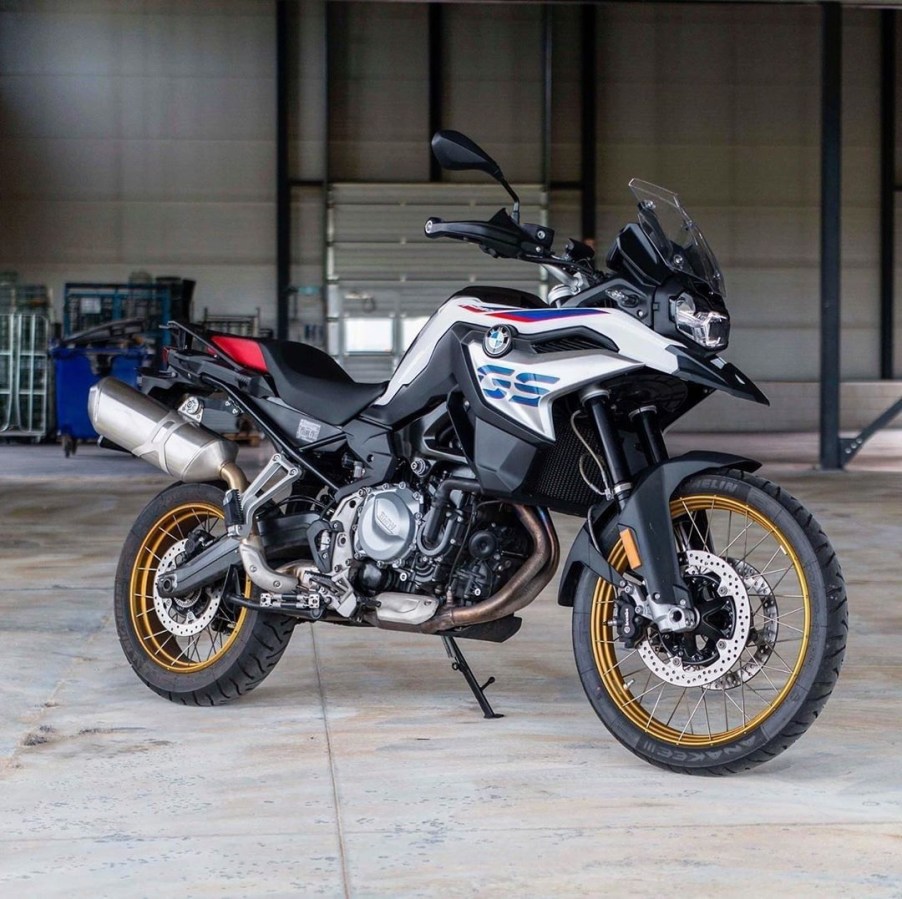
What Do You Need to Go Off-Road on a Motorcycle?
Preparation is key for off-roading a truck or SUV. And it’s even more important if you’re going off-road on a motorcycle. However, getting ready for an off-pavement motorcycle adventure doesn’t have to be intimidating. Here’s what you’ll need.
Picking an off-road motorcycle

The first step is figuring out what kind of off-road motorcycle you’ll need. Scramblers may be cool, but only a few have proper off-road chops. And even then, they often lack the ability to carry the appropriate gear.

Adventure bikes are what often come to mind when people think of off-road motorcycles. These can freely transition on- and off-pavement, especially with a good set of tires. Even fairly-basic models like the Royal Enfield Himalayan feature long-travel suspension, engine guards, and luggage racks. More expensive models, like BMW’s famed R 1250 GS Adventure and Moto Guzzi’s V85TT, offer things like heated grips, handguards, traction control, and adjustable ABS.
But adventure bikes do have some drawbacks. They tend to be a bit top-heavy, Cycle World reports, compared to true dirt bikes. The larger-engine models’ additional weight and size also complicate handling, ADVPulse explains. If it’s your first time going off-road on a motorcycle, best skip something like the sidecar-equipped Ural.

If ADV motorcycles seem a bit too intimidating, there are also dual sports. These trade some of the adventure bikes’ on-road civility for greater off-road capabilities, ADVPulse explains. Think of them as dirt bikes that can be ridden somewhat comfortably on the pavement, RideApart explains.
Dual sports are lighter than ADV bikes and generally come with single-cylinder engines. That, combined with a lack of standard windscreens, mean they’re not as good on the highway. But they’re easier to repair in case you crash or damage them. Plus, they have even more suspension travel, and their lighter weight makes for better handling. They can’t carry quite as much gear, though that can be an advantage, Gear Patrol reports.
Off-road motorcycle safety gear
Once you have your off-road motorcycle, it’s time to gear up. You don’t have to buy the most expensive gear, ADVPulse reports. But it needs to fit you comfortably and keep you protected.
Off-road motorcycle helmets generally fall into 2 categories, Revzilla reports. Dirt bike helmets have better ventilation and weigh less. But you’ll need goggles because they don’t come with face shields. They do have sun visors, though. And that lighter weight comes with more road noise and less rain and wind protection.
Adventure helmets, meanwhile, are somewhere in-between a dirt bike and street bike helmet. They’re designed to resist wind buffeting better than dirt bike helmets and come with face shields. They also vent better than the average street helmet. But they’re not quite as sturdy as street helmets, or as light as dirt bike helmets.
To keep the elements at bay, you’ll need a good adventure jacket, Cycle World reports. These have abrasion-resistant materials, closable vents, and linings to absorb sweat and keep water out, ADVPulse reports. Many either come with armor or armor pad pouches. Apparel companies also offer armored and weather-proof pants to go with the jackets, Gear Patrol reports.
Another option is a dirt bike jersey and external armor. That improves airflow, which keeps you cool. But the thin material provides less abrasion resistance.
Going off-road on a motorcycle also requires proper boots and gloves. The best boots have ankle support, as well as protection for the shin, toes, and inner leg. But too much protection and they can be uncomfortable to ride or walk around in. It’s a similar situation with the gloves, Motorcyclist reports. If they’re so armored you sweat and keep taking them off, they’re arguably just as bad as ones without any protection.
Learning the skills
There are a few more pieces of useful off-road gear to keep in mind, Cycle World reports. Things like hydration packs, luggage, tire repair kits, maps, and GPS devices. The safety gear, though, is what will protect you when you’re riding your motorcycle off-road. Which, of course, requires knowing how to properly ride your bike off-road.
Riding an off-road motorcycle isn’t quite like riding one on the pavement, RideApart explains. The different environment requires a slightly different approach. For example, in addition to keeping your weight back in deep sand, you’ll need to keep your speed up. There is a time and place for ‘paddling,’ Revzilla reports, or sitting down and using your legs to push off obstacles. But in deep sand, momentum is your friend.
Other counter-intuitive techniques include not relying on the front brake, and pushing down on the tire in turns. But, as is the case on the road, you need to focus on where you want to go, not where you don’t. And shifting your weight onto the outside peg to improve cornering stability. In addition, if possible, set up your clutch so you can operate it with 2 fingers. Using the clutch’s friction zone helps control your off-road motorcycle’s power delivery and traction, which is crucial at low speeds around obstacles.
Finally, be comfortable with doing all this while standing. It improves your ability to transfer weight, which makes handling and obstacle-crossing easier. It’s more physically-demanding than sitting, but it’s an important skill to pick up for going off-road on your motorcycle.
Follow more updates from MotorBiscuit on our Facebook page.


